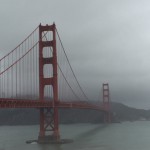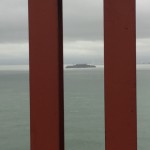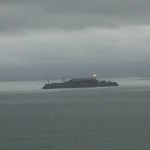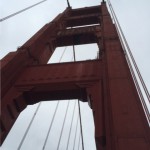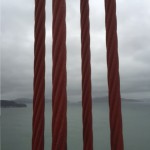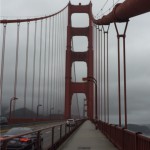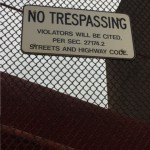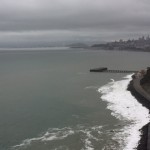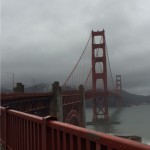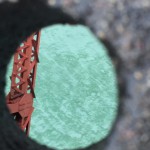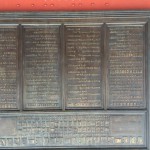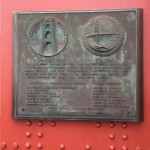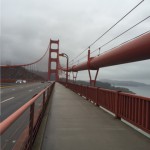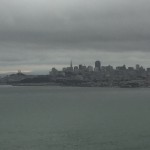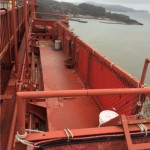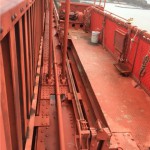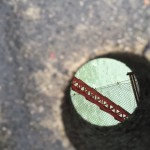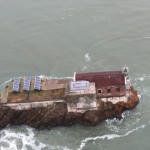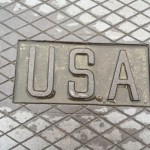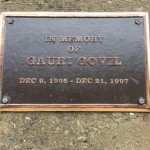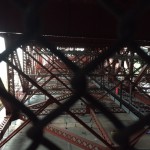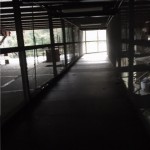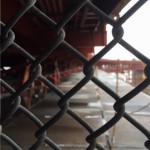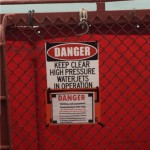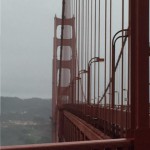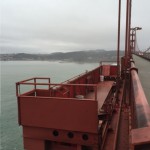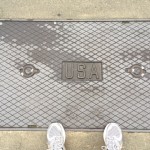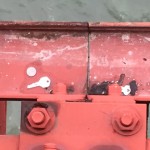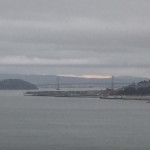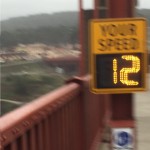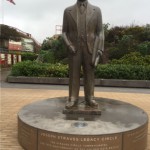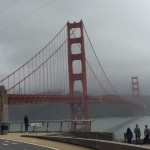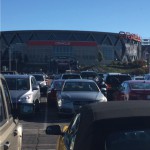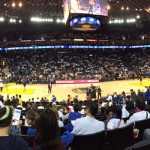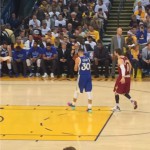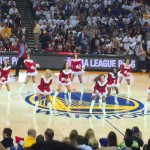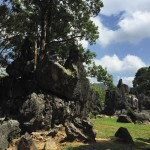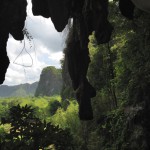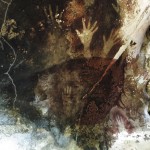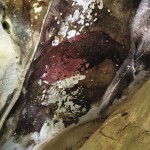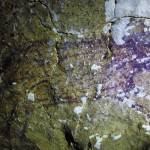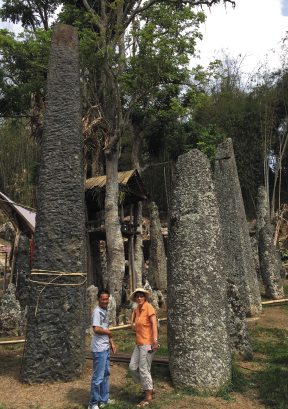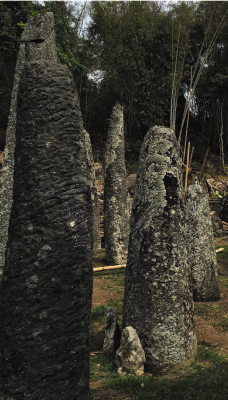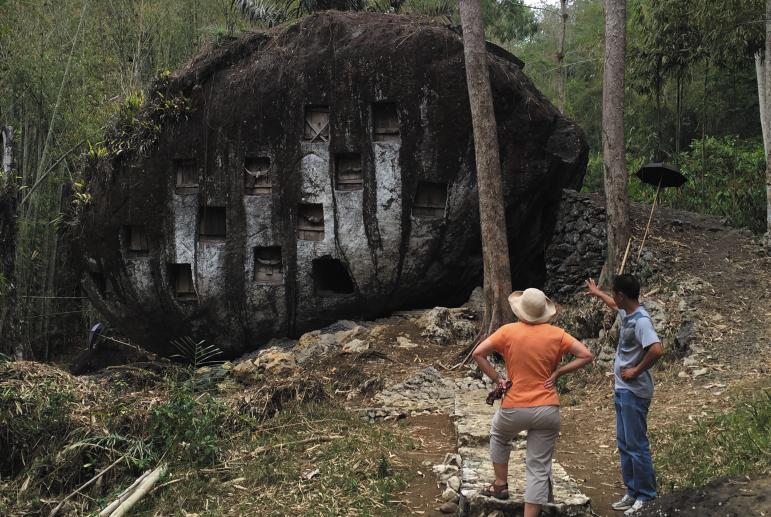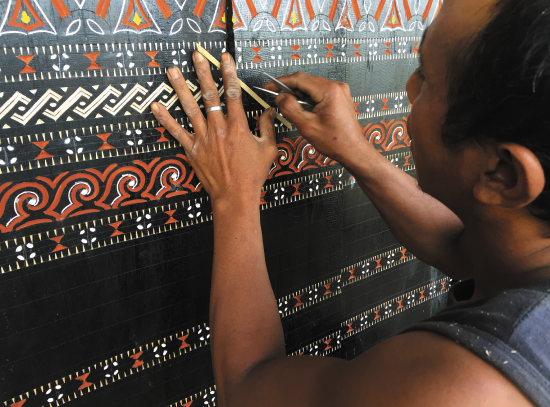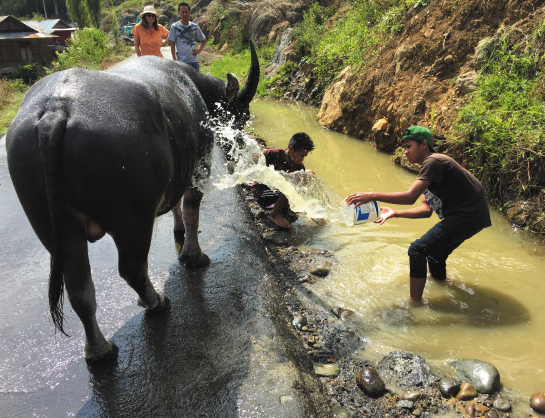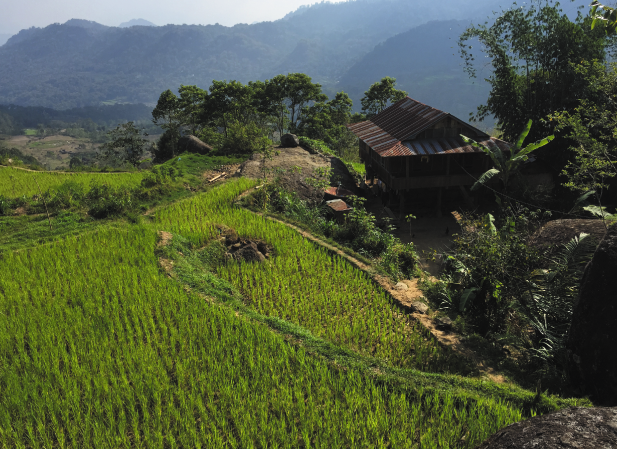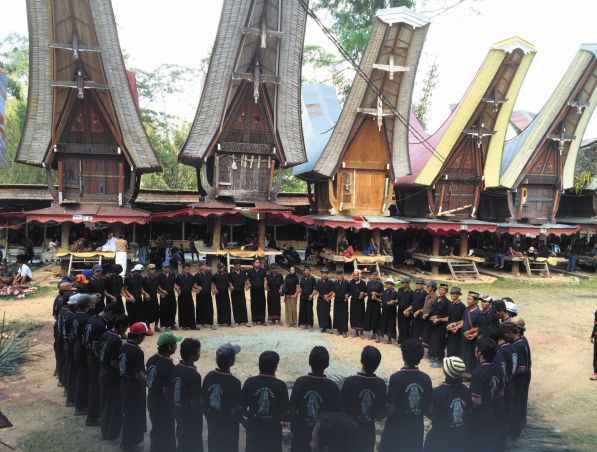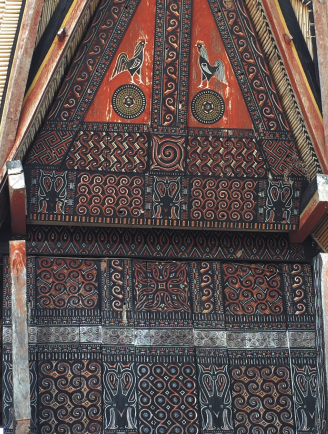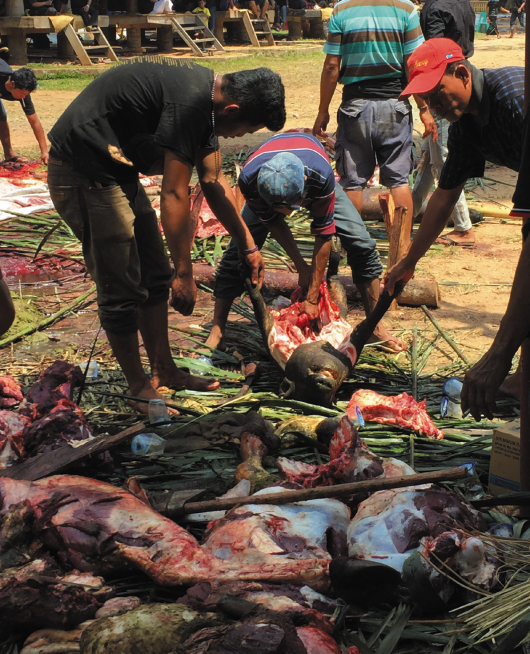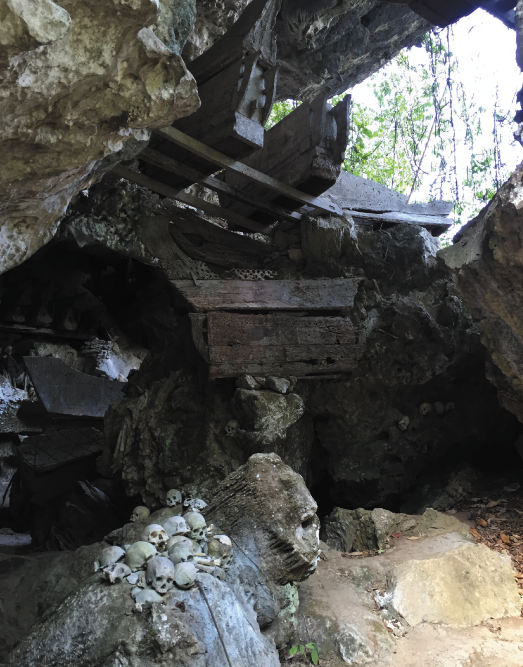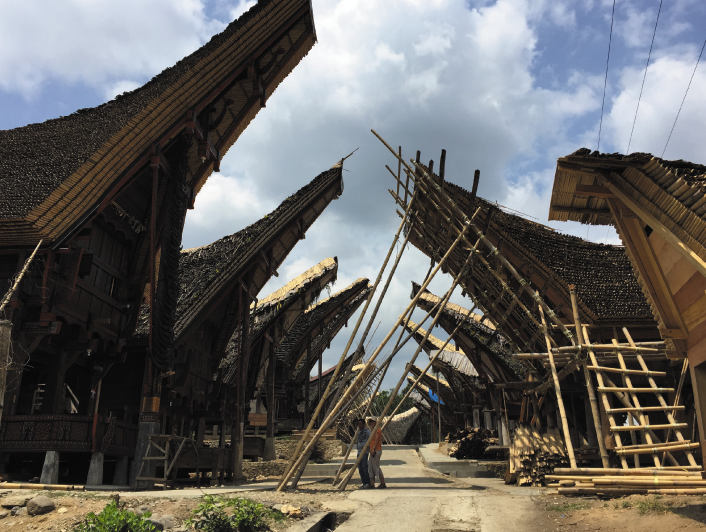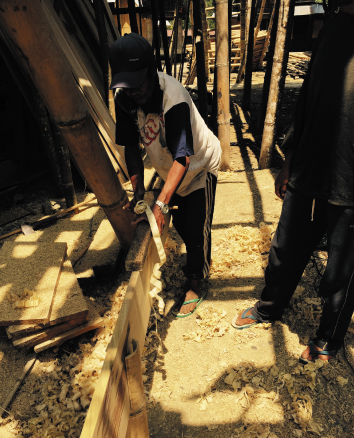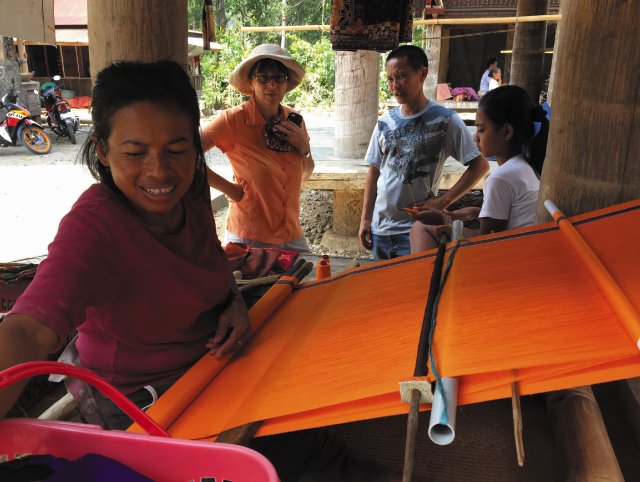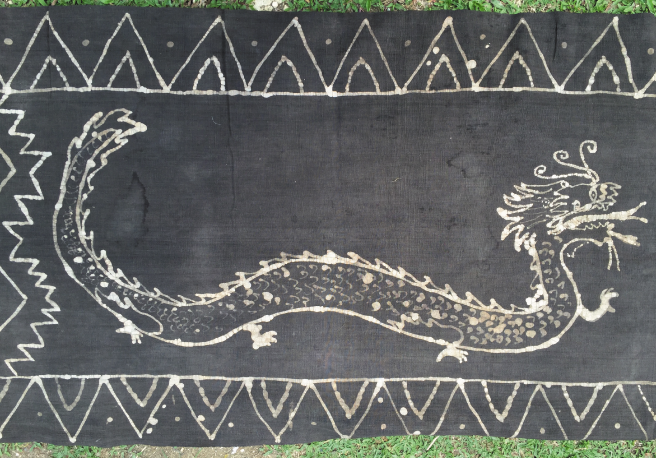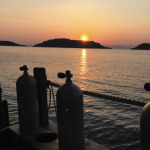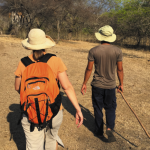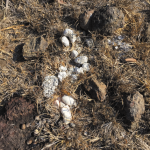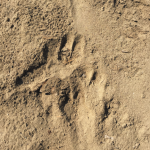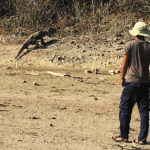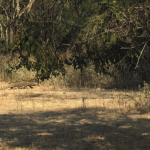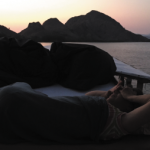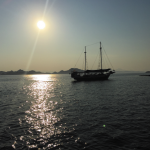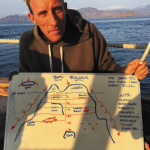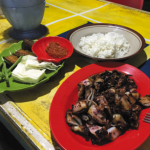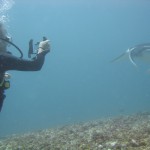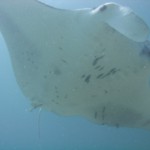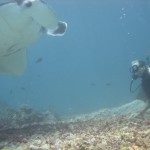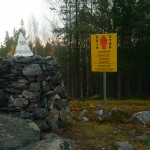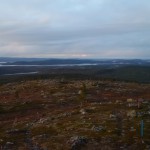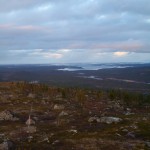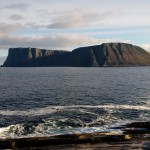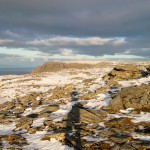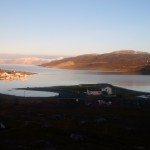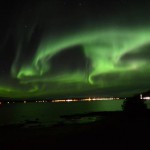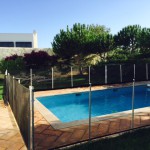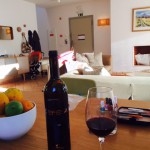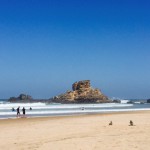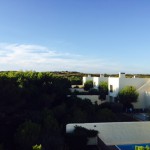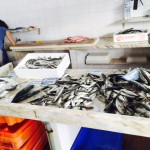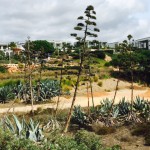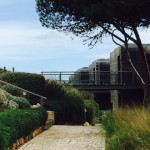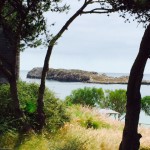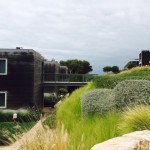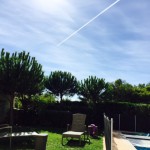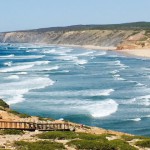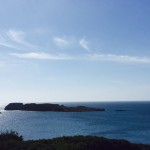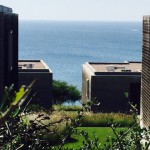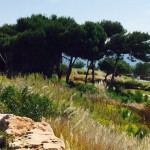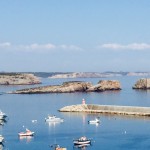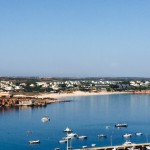The first signs of rising sun after pleasantly cold night on the top deck. The smell of coffee from the boat kitchen. Mom wakes up, stretches and we are ready to go. Another day in El Paradiso. At 5:30, the skipper starts the engine to get to our first diving spot before somebody else takes it. Batu Balung. (Island with Hole).
We leave early, just a cup of coffee or tea, a biscuit or two. The breakfast comes after our dive. This is not a cruise, it is not about comfort. It is the world of diving fanatics. Everything is driven by the next dive. And the next dive. And on and on and on. Our dive master, Ed Statham, 42 years old English expat, lives here for over 5 years. First he built a dive center on a small island living in a palapa for 2 1/2 years. His Swedish girlfriend left after 3 months. Founded his diving company, Wunderpus with two great boats. Now has a new girlfriend Naomi, half German (father) and half Japanese (mother), living and working as a buyer for IKEA in Tokyo while trying to complete her dive master course with Ed, her boyfriend. Her roommate fromTokyo, Korean girl Dahe, is here too. She can’t swim but she does not mind snorkeling and she even tried diving. Altogether we are a nice mix of nationalities, no two of us sharing the same roots leading to great discussions over the „dining table“.
Before going to the water Ed tells me what he plans to do in our next dive. I am extremely lucky since I am the only certified Open Water Diver on board so I get all possible and impossible attention which serves me well. Ed is extremely knowledgeable and experienced dive master, he knows local diving sites well, so I learn a lot during those 3 days with him on the boat. On many dives we are joined by Naomi so having one dive master on the left and another on the right does not leave any room for my mistakes BUT…..
The first day, and during our 3rd dive, after an incredibly exciting dive with frolicking mantas a pretty terrible thing happened to all three of us. We were diving in Lintah Strait between Komodo and Flores Island. This a very narrow straight connecting Indian and Pacific Oceans and currents are pretty wild here. After we came to the surface we were dragged into a humungous whirlpool with a strong downward current in the eye of the whirlpool. I, as the least experience diver, I fill usually my BCD with air, to make my life on the surface as comfortable as possible. Thanks to this I got spit out off the whirlpool after a few minutes of struggle, but Ed and Naomi stayed in the whirlpool eye way too long. For me it was a scare of my life to see Ed, with 3,500 dives to fight for his and Naomi’s life until our bloody boat made it through currents close enough to throw them a rope and pull them and me on the deck.
Meanwhile, mom and Dahe were snorkeling alone and separately some half a mile away. What can I tell you, it was a scare of my life until we pulled first Dahe, she lost one of her fins, and finally mom. She was, thanks God, in relatively calm waters sheltered by the island. Hurrah! We came finally together as the sun set and, as it happens in the tropics, darkness came very fast. The dinner, and a celebratory drink of cider, were both well deserved. And for me to realize that the danger of diving does not come necessarily from the depth!
So do not worry, we are well and safe. As a result take the pictures of our peaceful life on the boat. I will be sending you some selected videos of hundreds I shot with my GoPro while diving. It is incredible place and my writing would not do any justice to what we saw here. And with mom well massaged for more than an hour in the local spa we more than enjoy great dinner of squid in the Fish Market. All is well and tomorrow we fly to our next diving location in Manado on northern shore of Sulawesi.

